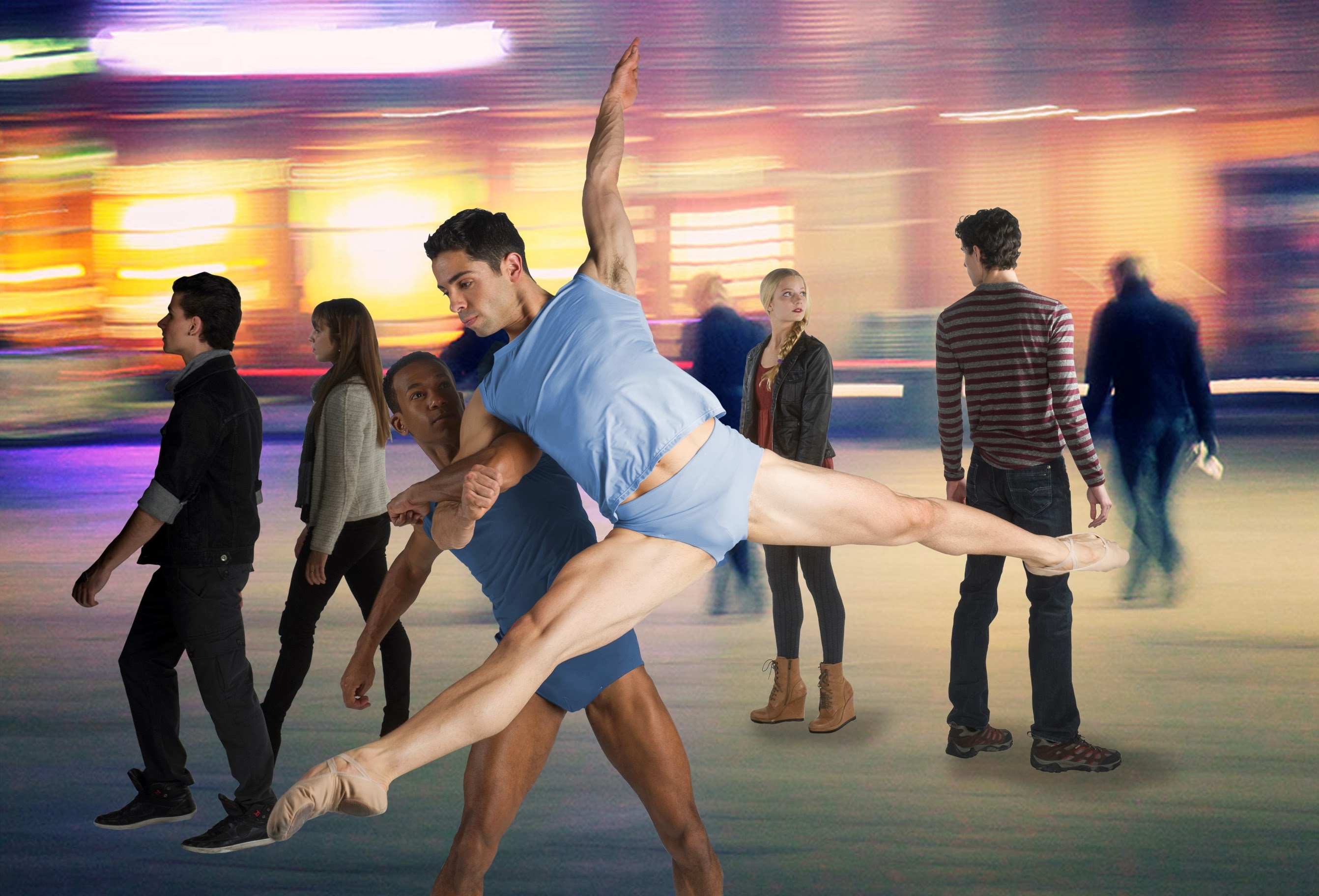“Choreography is where dance makes sense to me,” says Chicago-based choreographer Brock Clawson.
Amidst the polar vortex, Clawson joined the Joffrey Ballet for a few weeks to set his work Crossing Ashland on the company. Clawson has become highly regarded as a distinguished choreographer in Chicago since retiring from performing for Thodos Dance Chicago less than a decade ago. Having often worked with contemporary companies the likes of Thodos and Giordano Dance Chicago, coming to the Joffrey is somewhat uncharted territory for Clawson (and for Joffrey too).
Crossing Ashland originally came about in 2012 as a commission for the Milwaukee Ballet. As part of the arrangement, Clawson was instructed to make a dance void of spectacle, since the other works on the program had consumed all the wing and fly space. Originally inspired by a second career in landscape design, the piece is founded on the horticultural principle of “right plant, right place,” and also by the juxtapositions of security and vulnerability, and pedestrians and dancers.

“We don’t always operate in the right relationship, the right city, the right job… A lot of us go through life that way, but what happens if we challenge ourselves to change, in order to find that ‘right plant right place?'” says Clawson.
Crossing Ashland became a metaphor for that challenge. Clawson and his partner typically stick to one side of Ashland while walking their dogs, very seldom pushing the boundaries of their path. Is this maybe a statement on the demographics of the east and west sides of the city? No, not really. In Clawson’s north side neighborhood, one side of Ashland looks pretty much the same as the other side. But every person has a comfort zone, a bubble, a space of complacency, and for Clawson, the dividing line of his bubble is North Ashland Avenue.
Joffrey dancers have bubbles too. In watching a rehearsal somewhat early in the process, it was fascinating to watch dancers of this calibre struggle with crawling on the floor (something contemporary dancers find to be innate), and then watch them stand up and do triple pirouettes as easily as I can blink. The piece is divided into sections, and the stage further divided into “human” areas and “dancer” areas. Though not narrative in nature, Crossing Ashland takes the viewer on an undulating ride of emotions and technical intensity. In learning this new style of choreography, it seemed as though the dancers were on one side of Ashland, and Clawson on the other; as a contemporary choreographer working with primarily classical dancers, he admitted he finds the rehearsal process both frustrating and exhilarating.
This program is Joffrey’s first in awhile to really celebrate living contemporary choreographers, and Clawson’s effort is the first from a Chicagoan in easily ten years. But contemporary dancing isn’t entirely new to the Joffrey. The company has long been known for pushing the boundaries of classical ballet (I mean, look at The Green Table? Astarte? That thing with Prince?!?). The elements of challenge and change continually put on these dancers is, in a way, what makes them so good. Ain’t no mountain they can’t climb, and this program is likely to be no different.
Also on the program is the highly anticipated return of Alexander Ekman’s Episode 31, premiered last August at the Chicago Dancing Festival, and Christopher Wheeldon’s Continuum: forty minutes of mathematical mayhem dressed all in green. If you haven’t seen the Joffrey in awhile, or at all, or think you don’t like ballet, this just might be the program that changes your mind
—
The Joffrey Ballet presents ‘Contemporary Choreographers’ runs Feb. 12-23 at the Auditorium Theatre of Roosevelt University (50 E. Congress Pkwy.). Specific showtimes are listed on the Joffrey’s website. Single tickets are $31-152, available at The Joffrey Ballet’s official Box Office at 10 E. Randolph Street, as well as the Auditorium Theatre of Roosevelt University Box Office, all Ticketmaster Ticket Centers, by telephone at (800) 982-2787, or online at www.ticketmaster.com.
